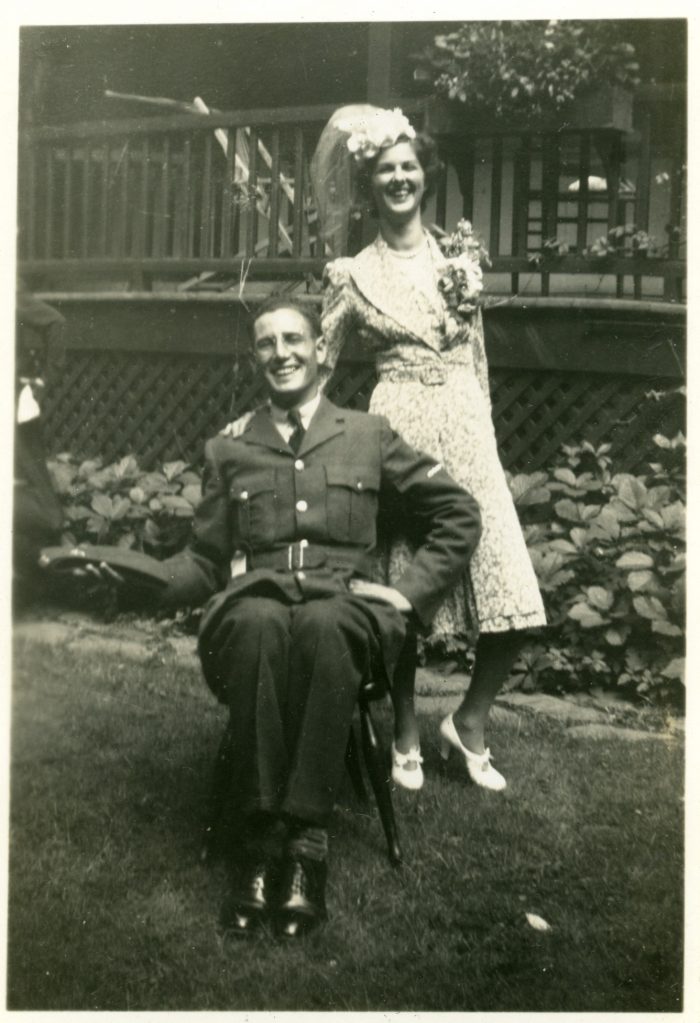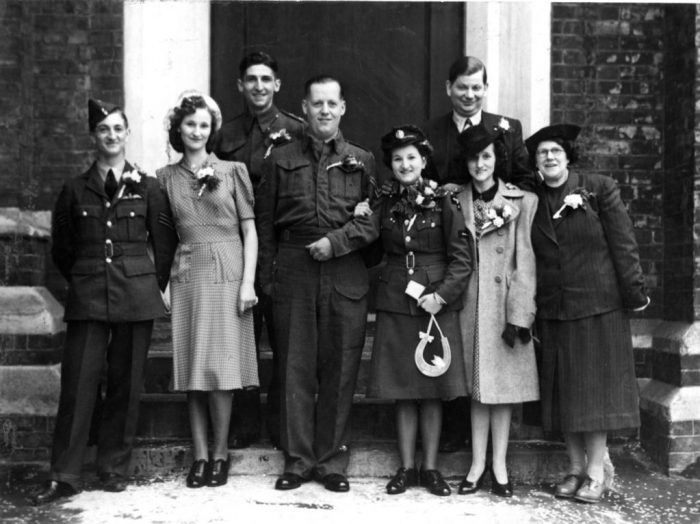

Partager
Love in the Time of War
22 novembre , 2019
It’s perhaps not the first thing we think of when reflecting on the World Wars of the 20th century but love and marriage were ever-present even during this tumultuous period. In particular, love (or, at times, enthusiastic pen pals) played an integral role in the war effort as it helped boost morale. Sometimes this looked like a couple quickly getting married before a soldier was shipped overseas. Other times, this looked like dedicated letter-writing by family, friends, and love interests to those serving overseas.
Romantic relationships also bloomed as servicemen intermingled with the local population while stationed overseas, and, in some cases, resulted in marriages. Once the war was over, many of these new brides followed their men to Canada, becoming known as the “war brides.” It is estimated that approximately 54,000 relatives and dependents returned with Canadian servicemen following WWI and approximately 65,000 wives and children of servicemen were transported to Canada after WWII. It is worth noting that there were some husbands of Canadian servicewomen who also immigrated following the war, and were dubbed with the unfortunate moniker “male war brides” in some of the press.
Most of the war brides were British, though some were from other European countries, and met their husbands while the servicemen were on leave, convalescing, or training in England. Although there were official military policies to discourage the marriage of servicemen and servicewomen to local civilians, it was an inevitable occurrence during the wars. Once peace was declared and the servicemen returned to Canada, the process of bringing their new brides and, often, children, was begun. The war brides and children coming to Canada after WWII, in particular, were transported overseas on converted luxury liners and troop ships, landing at Pier 21 in Halifax and then boarded trains to take them to their destinations across Canada.
For some women, the move to Canada was an exciting adventure while others regarded the departure from their family and homeland with sadness and trepidation. After arriving in their new communities, the war brides were often invited to special welcoming events hosted by local groups such as the Women’s Institute and the Imperial Order Daughters of the Empire. At one event, which took place in Ayer’s Cliff, the local ladies shared tips on gardening, dressing for the climate, and recipes for dishes “much loved by all Canadian men” with the new-comers. Many war brides adjusted to and embraced their new community and country over the months and years but for some it proved to be too much to overcome, and they separated or divorced their husbands and returned to England.
Interested in learning more about the experiences of war brides? Joyce Hibbert’s The War Brides (published in 1978), consisting of excerpts from interviews with war brides of Canadian servicemen, is a fascinating account of this group of women.

